Robert Devereux was the son and heir of Robert Devereux, 2nd Earl of Essex,
 the courtier and soldier from the later reign of Queen Elizabeth I. His mother was Frances Walsingham
the courtier and soldier from the later reign of Queen Elizabeth I. His mother was Frances Walsingham 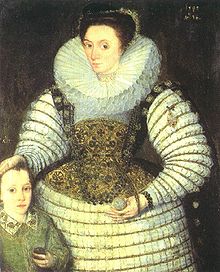 (1569–1631), the only daughter of Sir Francis Walsingham,
(1569–1631), the only daughter of Sir Francis Walsingham,  Elizabeth's spymaster.
Elizabeth's spymaster.The 2nd Earl led an unsuccessful rebellion against Elizabeth in 1601.
 He was subsequently executed for treason and the family lost its title. However King James I chose to restore it after he became King of England. In 1604, Robert Devereux became the 3rd Earl of Essex.
He was subsequently executed for treason and the family lost its title. However King James I chose to restore it after he became King of England. In 1604, Robert Devereux became the 3rd Earl of Essex. The young earl became a close friend of Henry Stuart, Prince of Wales,
The young earl became a close friend of Henry Stuart, Prince of Wales, who was three years Essex's junior.
who was three years Essex's junior.Essex was married at age 13 to 14-year old Frances Howard; he was then sent on a European tour from 1607 to 1609, apparently without having consummated the marriage. Meanwhile, his wife began an affair with Robert Carr, Viscount Rochester, a favorite of King James I. After Essex's return, Frances sought an annulment on the grounds of impotence. Essex claimed that he was only impotent with her and had been perfectly capable with other women, adding that she "reviled him, and miscalled him, terming him a cow and coward, and beast."The divorce was a public spectacle and it made Essex a laughing-stock at court. The annulment was granted on 25 September 1613, and Frances Howard married her lover, who had been made 1st Earl of Somerset, on 26 December 1613. Three years later the Somersets were tried by a panel of Lords for their part in the murder of Sir Thomas Overbury;
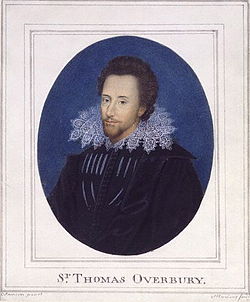 Essex sat as a juror in the trial of his former wife and pressed the King to send her to the scaffold.Both were condemned to death, but the sentence was never carried out.
Essex sat as a juror in the trial of his former wife and pressed the King to send her to the scaffold.Both were condemned to death, but the sentence was never carried out.On 11 March 1630 Essex married Elizabeth Pawlett, daughter of Sir William Pawlett, of Edington, Wiltshire, past High Sheriff of Wiltshire and cousin of William Paulet, 4th Marquess of Winchester. Elizabeth was introduced at Court during the Great Parliament of 1628/29 just after her father died, as the eldest unmarried daughter needing to marry to improve her family prospects. Back from travels in military service on the Continent (see below)
Robert was also pressured to marry again (and quickly) to show the Court the humiliation from his first marriage could be overcome. This marriage was also a disaster and failed, though not as publicly. They separated in 1631, the Countess remaining at Essex House in London, Robert "playing soldiers" at his estates. There was a child later produced from the union, however dying very young. However, the father was largely suspected by the Court to be her alleged lover, Sir Thomas Uvedale (from the alleged prompting of William Seymour, 1st Marquess of Hertford., Robert's brother-in-law who leased part of Essex House in London, and expected to inherit if Robert had no issue). Elizabeth, through her funeral oration (years later) by her second husband Sir Thomas Higgon vigorously denied this. In 1645, Essex was given
 Somerhill House near Tonbridge, Kent, which had been sequestrated by Parliament from Ulick Burke
Somerhill House near Tonbridge, Kent, which had been sequestrated by Parliament from Ulick Burke 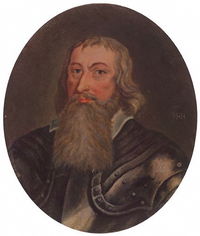 following the Battle of Naseby.
following the Battle of Naseby.It has recently been suggested that Essex suffered from male hormone deficiency, leading to failure to consummate his first marriage and produce an heir in his second.However, portraits of Essex show him with a prolific growth of facial hair. He also had a tendency to aggression leading to quarrels and threats of duels. Both these characteristics are counter-indicative of hypogonadism.
In 1620 Essex embarked on what was to be an undistinguished military career prior to the start of the First English Civil War. Between 1620 and 1624 he served in Protestant armies in Germany and the Low Countries. In 1620 he joined Sir Horace Vere's
 expedition to defend the Palatine. In 1621 he served with Prince Maurice of Nassau
expedition to defend the Palatine. In 1621 he served with Prince Maurice of Nassau , in 1622 with Count Ernst von Mansfeld (battle of Fleurus, 29 August 1622).In 1624 he commanded a regiment in the unsuccessful campaign to relieve the siege of Breda. And in 1625 he commanded the failed English expedition to Cadiz.
, in 1622 with Count Ernst von Mansfeld (battle of Fleurus, 29 August 1622).In 1624 he commanded a regiment in the unsuccessful campaign to relieve the siege of Breda. And in 1625 he commanded the failed English expedition to Cadiz. Despite the lack of distinction, this period of his life gave him a good working knowledge of continental war methods and strategies, even if most of his own experience was limited to defensive operations.
Despite the lack of distinction, this period of his life gave him a good working knowledge of continental war methods and strategies, even if most of his own experience was limited to defensive operations.Following a period of little distinguished activity in the 1630s, Essex served in the army of King Charles I during the first Scottish Bishops' War in 1639.
 However he was denied a command in the second, which took place in 1640. This pushed him further into the arms of the growing number of the King's opponents in Parliament.
However he was denied a command in the second, which took place in 1640. This pushed him further into the arms of the growing number of the King's opponents in Parliament.When Charles convened the Short Parliament in 1640 he had ruled without Parliament for 11 years. He was forced to call another one to raise money to fight insurgencies in Scotland and Ireland. However many Parliamentarians sought to use the new Parliament to bring the King to account. Relations between Charles and his Parliament quickly broke down.
Battle of Lostwithiel The Battles of Lostwithiel or Lostwithiel Campaign, took place near Lostwithiel  and Fowey
and Fowey  during the First English Civil War in 1644.
during the First English Civil War in 1644.
After defeating the Army of Sir William Waller at the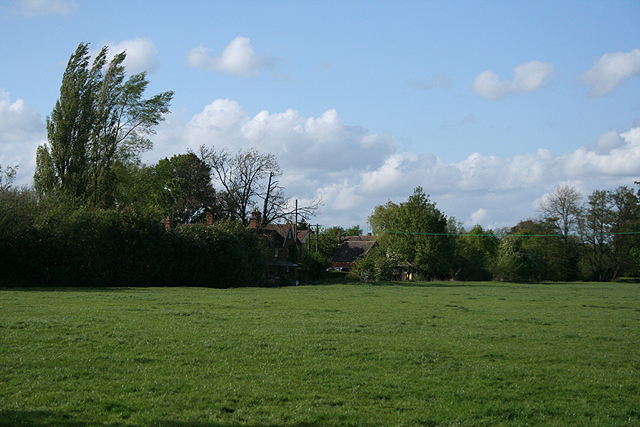 Battle of Cropredy Bridge,
Battle of Cropredy Bridge, King Charles marched
King Charles marched  west in pursuit of the Parliamentarian army of the Earl of Essex, who was invading the Royalist stronghold of Cornwall.
west in pursuit of the Parliamentarian army of the Earl of Essex, who was invading the Royalist stronghold of Cornwall.
Essex had been misled into believing that he could expect substantial support from the people of Cornwall. When he had reached Bodmin  on 28 July, he found that there was no chance of supplies or recruits, and he also learned that the Royalist army was at Launceston
on 28 July, he found that there was no chance of supplies or recruits, and he also learned that the Royalist army was at Launceston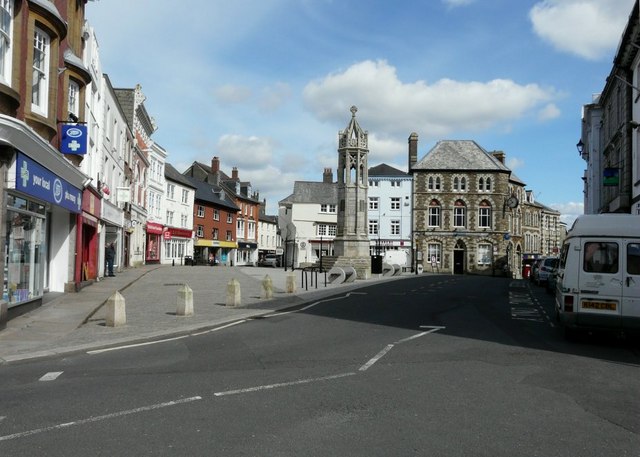 , close to his rear. He withdrew to Lostwithiel
, close to his rear. He withdrew to Lostwithiel , covering the port of Fowey. Essex had previously arranged to rendezvous at Fowey with the Parliamentarian fleet under the Earl of Warwick
, covering the port of Fowey. Essex had previously arranged to rendezvous at Fowey with the Parliamentarian fleet under the Earl of Warwick , but no ships appeared. Warwick was unable to leave Portsmouth because of westerly winds.
, but no ships appeared. Warwick was unable to leave Portsmouth because of westerly winds.
King Charles's army had been reinforced as it marched, and outnumbered that of Essex by nearly two to one. The first clashes took place on 2 August, but little action took place for several days, as the King waited for all his forces to arrive and Essex waited for the fleet. On 13 August, the Royalists began to attack in earnest, occupying several outposts on the east bank of the River Fowey, making it even more difficult for help to reach Essex. A Parliamentarian attempt to send a relieving force under Lieutenant General Middleton was defeated at Bridgwater
making it even more difficult for help to reach Essex. A Parliamentarian attempt to send a relieving force under Lieutenant General Middleton was defeated at Bridgwater in Somerset.
in Somerset.
On 21 August, the Royalists attacked Essex's positions north of Lostwithiel, capturing the ruins of Restormel Castle. Royalist cavalry threatened to cut the Parliamentarians off from Fowey. Essex realised that there was no hope of relief and ordered his cavalry to break out of the encirclement. Under Sir William Balfour, they broke through the Royalist lines on the night of 31 August, eventually reaching Plymouth 30 miles to the east.
Royalist cavalry threatened to cut the Parliamentarians off from Fowey. Essex realised that there was no hope of relief and ordered his cavalry to break out of the encirclement. Under Sir William Balfour, they broke through the Royalist lines on the night of 31 August, eventually reaching Plymouth 30 miles to the east.
The increasingly demoralised Parliamentarian infantry fell back towards Fowey in pouring rain. They were forced to abandon several guns which became bogged down in the muddy roads. On 1 September, the pursuing Royalists captured Castle Dore , another ruined fortification which the Parliamentarians were using to anchor their lines. Essex left Sir Philip Skippon, his Sergeant Major General of Foot, in command while he himself escaped to Plymouth in a fishing boat.
, another ruined fortification which the Parliamentarians were using to anchor their lines. Essex left Sir Philip Skippon, his Sergeant Major General of Foot, in command while he himself escaped to Plymouth in a fishing boat.
On 2 September, Skippon, having been told that his infantry were unable to break out as the cavalry had done, and having been offered generous terms by the King, surrendered 6,000 infantry and all his army's guns and train. The disarmed soldiers marched eastward to Portsmouth in continuing bad weather, being continually robbed and threatened by local people. About 1,000 died of exposure and hunger, and 1,000 more deserted or fell sick. Charles meanwhile wheeled about and marched toward London. Other accounts say that Essex managed to get perhaps 2,000 of his cavalry away along the road from Lostwithiel to Liskeard 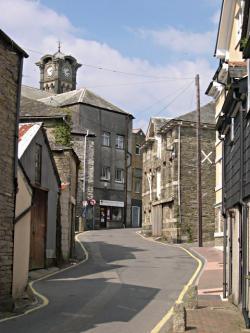 , left almost unguarded by the Royalists.
, left almost unguarded by the Royalists.
For the rest of the Parliamentary army, however, the future was bleak. Forced further and further back towards Fowey, they abandoned Lostwithiel on August 31, the day after a poorly organised breakout had failed because deserters had traded the information for good treatment. Faced with inevitable defeat Essex saved his own skin, in filthy weather to hide him taking a small boat from Fowey on September 1. Skippon as said was left to surrender, which he did after negotiating what seemed like very good terms for his army – the Royalists knew they would suffer heavy casualties had the trapped force been engaged in battle.
About 6,000 Parliamentarians, mainly infantry, marched out of the area, having abandoned their weapons, with free passage to Portsmouth allowed them. The supplies of this force had dwindled during the Lostwithiel campaign, and on the march many succumbed to hunger and disease, and it is probable groups of stragglers were picked off by the Cornish irregulars who had allied themselves loosely with the king.
This setback for Parliament in Cornwall, and the last major victory for the Royalists, was reversed by Sir Thomas Fairfax leading the New Model Army at or near Tresillian Bridge, close to Truro on 12 March 1645
close to Truro on 12 March 1645
The Lostwithiel campaign proved to be the end of Essex's military career. His army participated in the Second Battle of Newbury on 27 October. However the Earl was sick in Reading at the time. His conduct in the West Country had frustrated Cromwell, now the most prominent member of the House of Commons following his military victories and the deaths of Hampden and Pym.EE9s2uiPj!BP8zNMydRQ~~60_12.JPG)
Cromwell had become embroiled in a feud with the Earl of Manchester, who was still his superior officer in the Eastern Association. Essex and Manchester remained sympathetic to the peace party, while Cromwell had emerged as the leading voice in the campaign to fight a more aggressive war against Charles. Following a month of Parliamentary arguments between Manchester and Cromwell, with the former speaking in the House of Lords and the latter making his attacks in the House of Commons, the scene was set for a showdown.




No comments:
Post a Comment